9+ Best Free Newsletter Software To Start With Email Marketing
So you’ve decided to focus more effort on your small eCommerce business. Perhaps like everyone else during a pandemic, you’re still working on your company out of your bedroom, but the customers don’t need to know about that.
One of the first tools people tell you to use to grow your business is email marketing. Maybe you’ve already sent customers some emails via Gmail, and now you want to find a better solution - some software that is built for businesses and sends professional-looking emails to thousands of subscribers at once.
A question lingers in your mind, though: Does a better email marketing option mean more cost?
Fortunately, there is an entire ecosystem of free email marketing software available, providing all the necessary features for email newsletters (and even more). If you are looking for an easy way to send newsletters to all of your subscribers with zero costs, the tools in this article are perfect for you.
Keep reading for a detailed analysis of each free newsletter software with pros, cons, sending limits, upgrades, and more. Then, I’ll share my top recommendation at the end.
Here are the 9+ best free newsletter software on the market to upgrade from Gmail for professionals.
What should you look for in a free newsletter software?
Email newsletter software are the tools that create the bulk emails businesses send to customers every day. You may have already received many newsletters from the company you subscribed to.
Newsletters are a fantastic way to share news, show off new product features, announce new promotions, promote new blog posts, and curate relevant content for your subscribers. If you are just starting out with newsletters and want to try out a few options before committing to a paid subscription, there are plenty of choices.
But, first, let’s look at the key features that you should look for in a free newsletter software (which I thoroughly researched in the apps selected for this article as well):
-
Template choices: Don’t waste time creating templates for your email newsletter from scratch every time. Choose software that has some awesome and professional template options to start right away.
-
Number of subscribers and sends: Some software, with just the free versions, are already generous in this part, offering thousands of free emails per month. Some others include a lower cap to encourage users to try the paid plans.
-
Segmentation options: It’s always useful to decide how you email subscribers according to their demographic info and their behaviors, especially if you have a large list. Audience segmentation is also essential for any business to grow.
-
Affordability: To make the most of email marketing, you won’t stay free forever. Your free newsletter software should also can scale when necessary with more features and higher limits as your company expands.
-
Automation: Newsletters, transactional emails, triggered campaigns, and more should have automation features as your email marketing effort scales.
-
Usability: Creating and sending newsletters should be simple. You shouldn’t spend all day on email marketing, a business requires much more work than that.
-
Reports: Performance reports are crucial to determine if your newsletters are performing well or not, so look for software with statistics and insights into how your email campaigns are doing.
9+ Best free newsletter softwares
Knowing what to look for in fantastic newsletter software, let’s look at the best options that I have researched and gathered for you:
1. AVADA Email Marketing
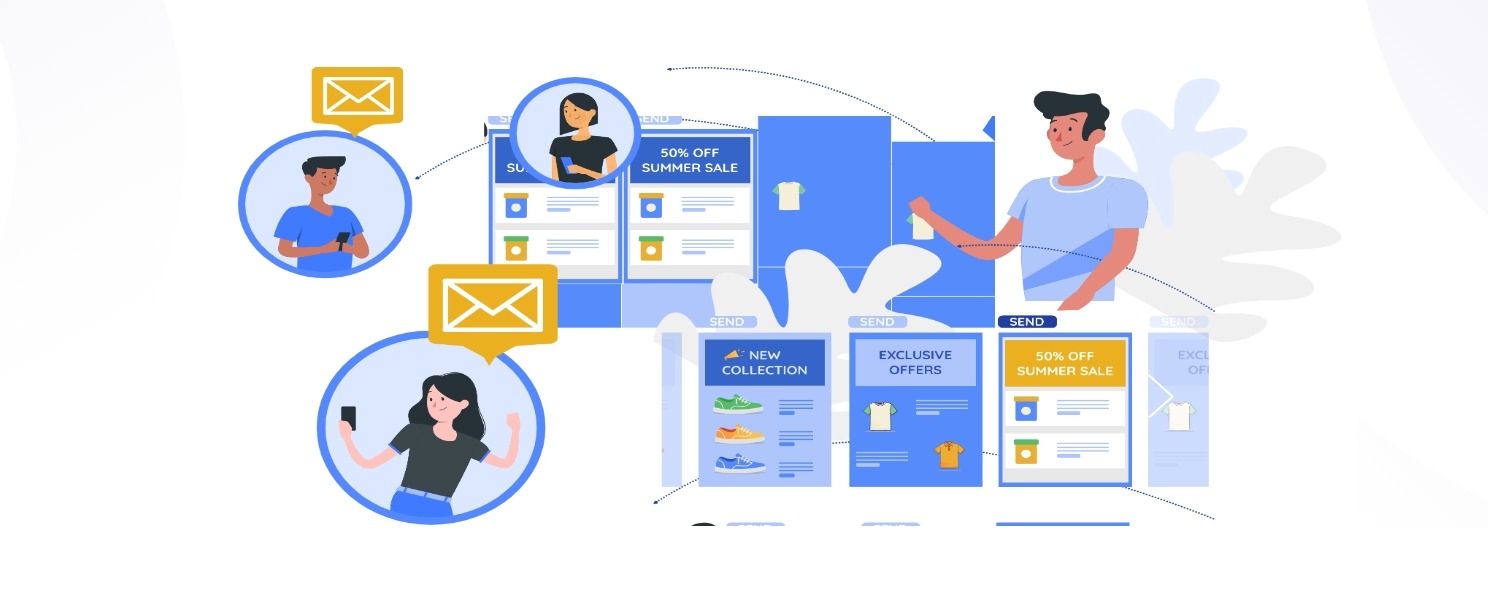
Well, of course I have to mention our app - AVADA Email Marketing - as the top contendant for the best free newsletter software. It pretty much has all the must-have features that were mentioned above, for free!
With AVADA Email Marketing, you can create professional newsletters in minutes without any coding or design knowledge required. After the creation phase, you can also schedule newsletters and let them auto-deliver to your subscribers’ inboxes at the best suitable time.
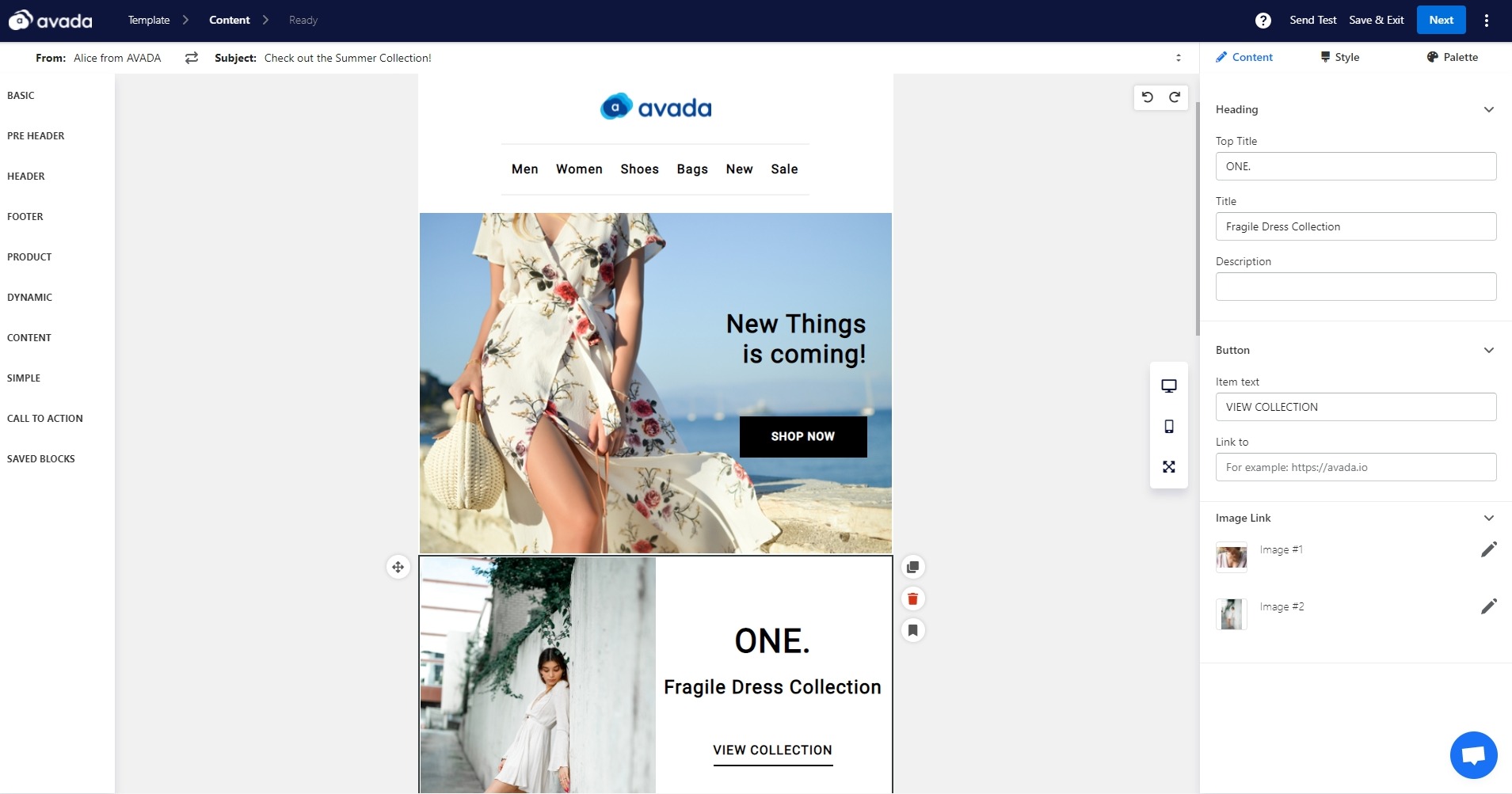
The key features that make this email marketing software perfect for businesses are:
-
Stunning email templates: You don’t need to hire a designer or agency to build your newsletters, since AVADA Email Marketing has all the best pre-built email templates to send mass emails quickly and simply. Of course, you can adjust the email templates to match your brand images and ideas. You can also save templates for the next newsletters, saving a lot of time with email marketing.
-
Smart campaign booster: You can increase the open rate and conversion rate of your newsletters with our campaign booster - create follow-up emails in an automated workflow to remind recipients about your emails. Within 48 hours, if the audience didn’t open your emails, a new email with a new subject line is sent to increase the chance of getting opened and make more clicks.
-
Drag and drop email builder: Templates are one thing, but if you want the newsletters to be truly your brand’s, you can freely build campaigns with a smooth and easy-to-use editor. Just drag and drop content blocks into your newsletters to set up every element without difficulty.
-
Powerful reports: AVADA Email Marketing also has comprehensive reports for each newsletter campaign, so you know which to keep and which to improve. Statistics like sent, opens, clicks, conversion, and revenue are how you learn about your audience and identify most profitable newsletter campaigns.
-
Convenient support: Even with just a free plan, you still get support from the AVADA team through emails so you can learn about all features and consult whether you should move to a higher pricing plan or not.
The best thing about AVADA Email Marketing’s free plan is that it offers 15,000 emails per month (500 sends per day) with a list of 1,000 contacts. Those are more than enough for a business that is just starting out, and it’s hard to find any other email marketing offering the same at the free level.
There are also features for newsletter popup and spin to win - which are tools for your business to collect new subscribers and expand the email list. With all of those, AVADA Email Marketing is the best free newsletter software for any small business.
Once you upgrade the pricing plan, AVADA Email Marketing would offer more advanced features such as SMS marketing, more templates, more workflows, and more in-depth analysis. These are all the necessary features for an eCommerce business to grow with email marketing.
AVADA Email Marketing pricing: For scalability, the app has an advanced pricing plan called Pro, which offers unlimited emails per month and starts at $9/month. The price goes up based on the number of contacts in your list. For more than 200,000 contacts, you can ask for custom pricing at an enterprise level.
2. Mailchimp
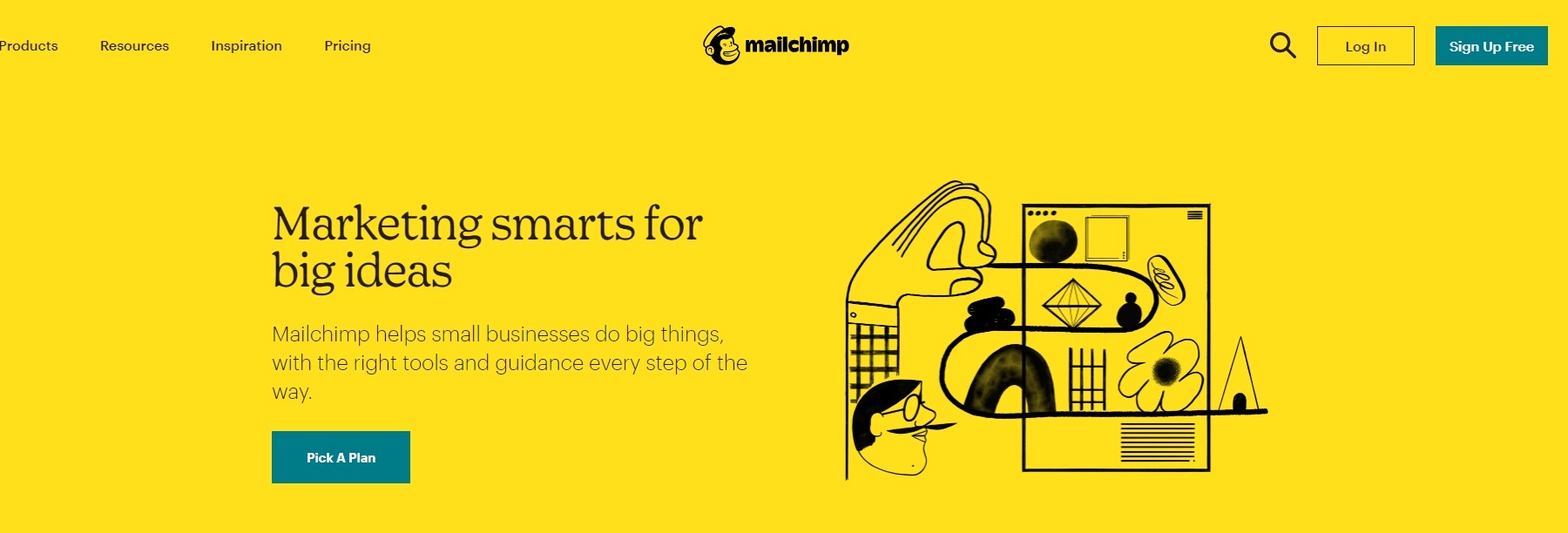
One of the most popular email marketing softwares thanks to their friendly branding, Mailchimp is a good option to start your email marketing program if you want to test things out and scale quickly. Following a recent rebrand and expansion, the app now has a landing page builder, marketing automation, list segmentation, customer journey mapping, retargeting ads, and A/B testing - all available in the free plan.
Mailchimp has an approachable drag-and-drop email editor with helpful tips and best practices that make it an accessible option for both fresh and experienced email marketers. For example, when you set up a subject line, a sidebar will remind you about the recommended character length, suggested emojis to use in the subject lines, and more.
Once you’re ready to scale beyond what the free plan offers, Mailchimp has three different paid tiers for businesses to choose from. Plus, Mailchimp can handle email lists of any size thanks to the long period of time providing email marketing services on the market.
For the free plan, Mailchimp offers 10,000 email sends per month with an email list up to 2,000 contacts, only slightly fewer email sends than AVADA Email Marketing.
If you would like to upgrade to a higher pricing plan with unlimited emails, it would cost $9,99 per month for at least 500 contacts and goes up based on the number of subscribers.
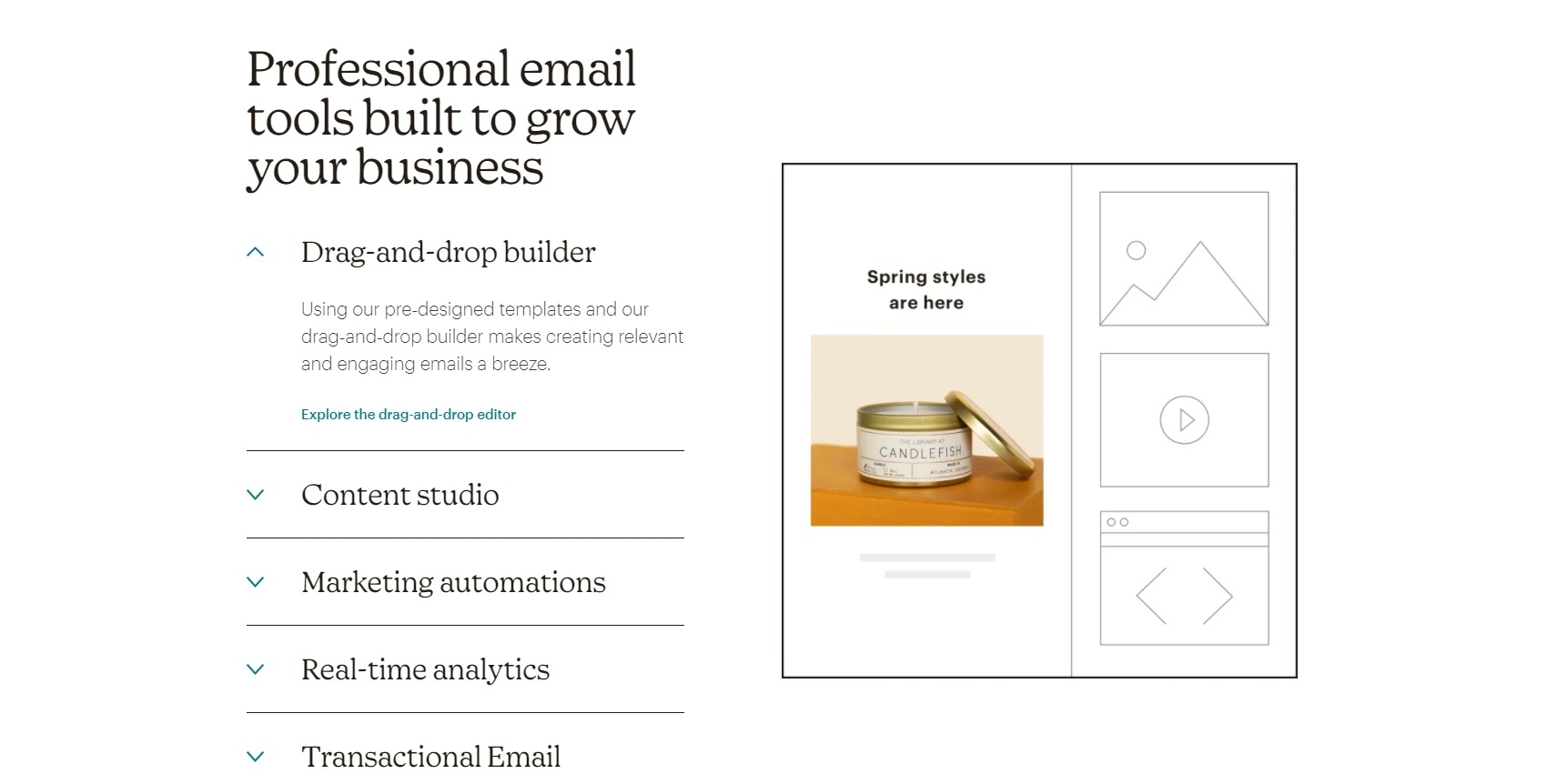
Although Mailchimp calls themselves the world’s biggest marketing automation platform, their automation tool can be massively improved if they have a workflow editor and more automations rather than just autoresponders. Emails from Mailchimp also have a tendency to arrive in Gmail’s Promotions tab – this is fine if your emails are for sales promotions and offers, but less ideal if your emails are informational or transactional.
Overall, Mailchimp is suitable for any small business owners and bloggers who love great designs and want to improve deliverability (their software can also help you optimize the open rates). As an eCommerce store, you can try Mailchimp’s free plan to try automating emails and make your workflows more efficient.
3. MailerLite

As the name suggests, MailerLite focuses on delivering a simple, no-fuss email marketing software. The result is a convenient newsletter tool with surprisingly useful features (such as landing pages, forms, and marketing automation). MailerLite’s ‘Free Forever’ plan gives users access to most – but not all – of their best features.
MailerLite doesn’t provide pre-made email templates on the free plan, but the dynamic and pre-designed content blocks can already make up for the lack of email templates. With blocks to highlight multiple articles, videos, products, apps, RSS lists, events, and more, MailerLite helps email marketers make quick work of creating new email campaigns and build custom templates.
With the app, your emails can have more than just text and images as well. There’s a countdown timer that dynamically shows customers the time remaining until a product’s launch or before a sale is finished. You can add product info, embed a video, pull in the most recent blog posts with a real-time updating RSS block, and more. It’s a fantastic way to send interactive emails - which is more exciting than just digital letters.
For the free plan, MailerLite offers 12,000 emails per month for up to 1,000 subscribers. With this plan, you will miss out on some advanced features such as templates creator, live chat support, CTR checker with a heat map, or A/B testing. You can unlock these features in MailerLite with $10 per month and scale more with more subscribers on the list.
The downside of MailerLite’s free plan is that their templates aren’t available on this plan, meaning you’ll have to build your own emails. There’s no design or spam testing, and while I like the workflow-based automation editor, users are limited to just a few automation functions such as trigger-based emails, contact fields updates, etc.
Overall, MailerLite is ideal for startups, small to mid-sized businesses, and eCommerce companies to create landing pages (for new products, for example), pop-ups, surveys, and emails from a single dashboard for a good deliverability.
4. Sendinblue

Starting out as a transactional email software, Sendinblue has successfully grown into the email marketing industry, offering advanced features such as email automation and SMS marketing.
The more you use email marketing for your company, the more you’ll need to use email automation. And Sendinblue has a variety of templated automation workflows based on specific goals. You can create your workflow to increase traffic, improve engagement, grow revenue, and build relationships.
Even with this advanced automation, you can move from setting up an account to actually editing email campaigns in just a few minutes. Here, you can build emails with pre-made templates and a convenient drag-and-drop editor. Then, you can send emails as newsletters or use automation workflows to send email campaigns on a schedule.
However, while Sendinblue’s templates are mobile-responsive, they could have a wider variety. Also, the software misses features such as A/B testing, which is a standard in most other email marketing tools.
On the free plan, Sendinblue offers an unlimited number of subscribers and up to 9,000 email sends per month, although there’s a daily limit of 300 emails (which makes it harder to send bulk campaigns). On this plan, you won’t get access to details of openers and clickers, email heat maps, and ad-free emails. The paid plans are also pretty affordable, starting at $25 for 40,000 emails.
If your email marketing strategy is more about sending trigger-based emails than sending newsletters, Sendinblue is a good option to try.
5. EmailOctopus
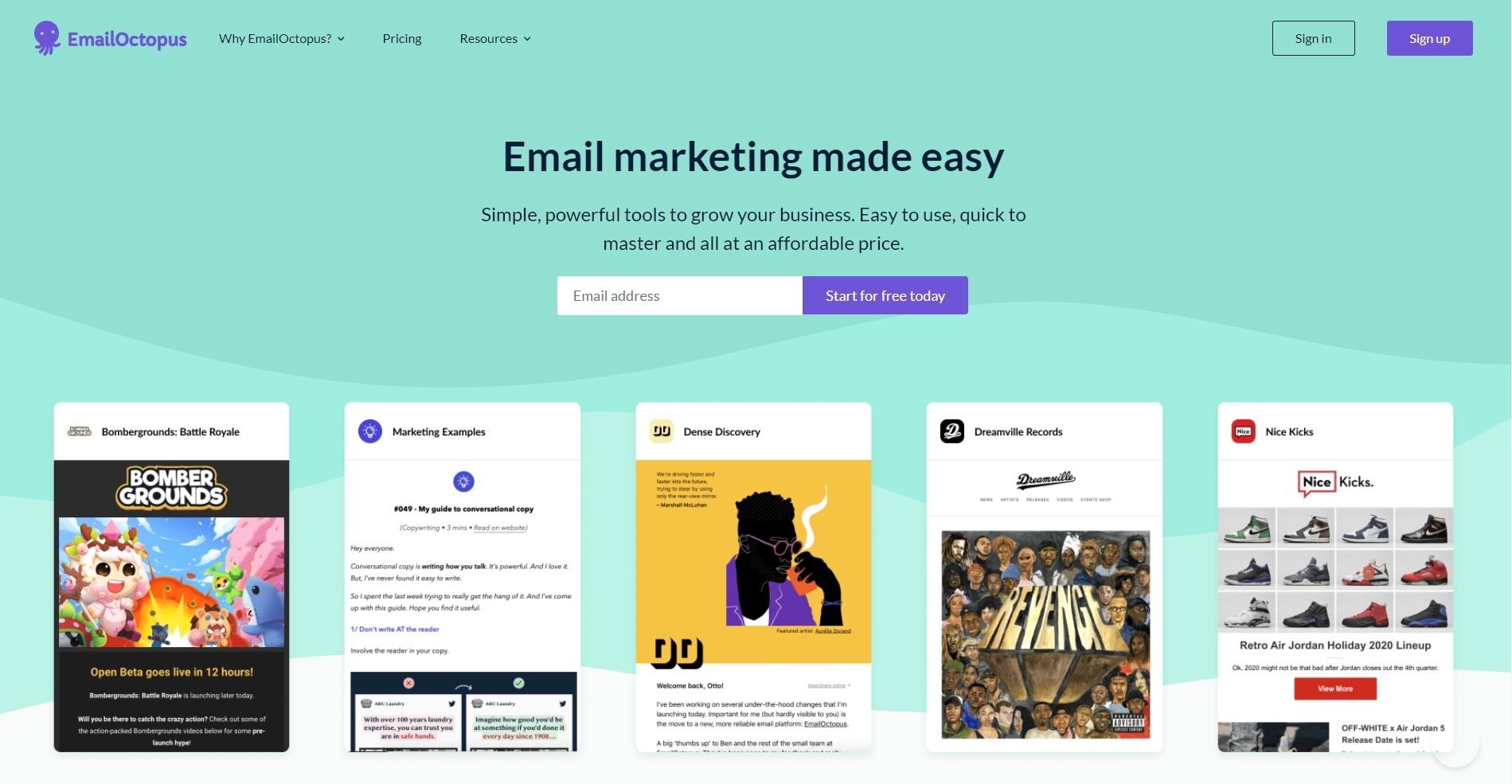
After Mailchimp, here’s another animal roaming in the email marketing industry. EmailOctopus is a special one though: it was built on top of the Amazon SES service that made the email infrastructure. The AWS account is still optional, meaning that you can use the Amazon account just like any other newsletter service.
The free plan of EmailOctopus lets you have 2,500 subscribers with a limit of 10,000 email sends per month. If you are using Amazon SES, you can even bump the free quota up to unlimited emails per month. This can always change but this is already a good deal for businesses on Amazon
Also, the paid plan’s pricings of EmailOctopus are on the lower end (50,000 subscribers for $20 per month) and once set up, the software provides a well-spirited newsletter tool that is incredibly easy to use. There’s a Zapier integration as well as an API available.
What EmailOctopus should improve is the range of features - which is a bit limited. If you are only trying to send classic newsletters and autoresponders, then they have everything you need. But for more advanced automation, you may need to find another solution.
Overall, EmailOctopus is recommended to cost-conscious email marketers who may already own an Amazon SES. They also seem to be cool with senders dealing with affiliate marketing and cryptocurrency, something other email providers often reject.
6. Sender
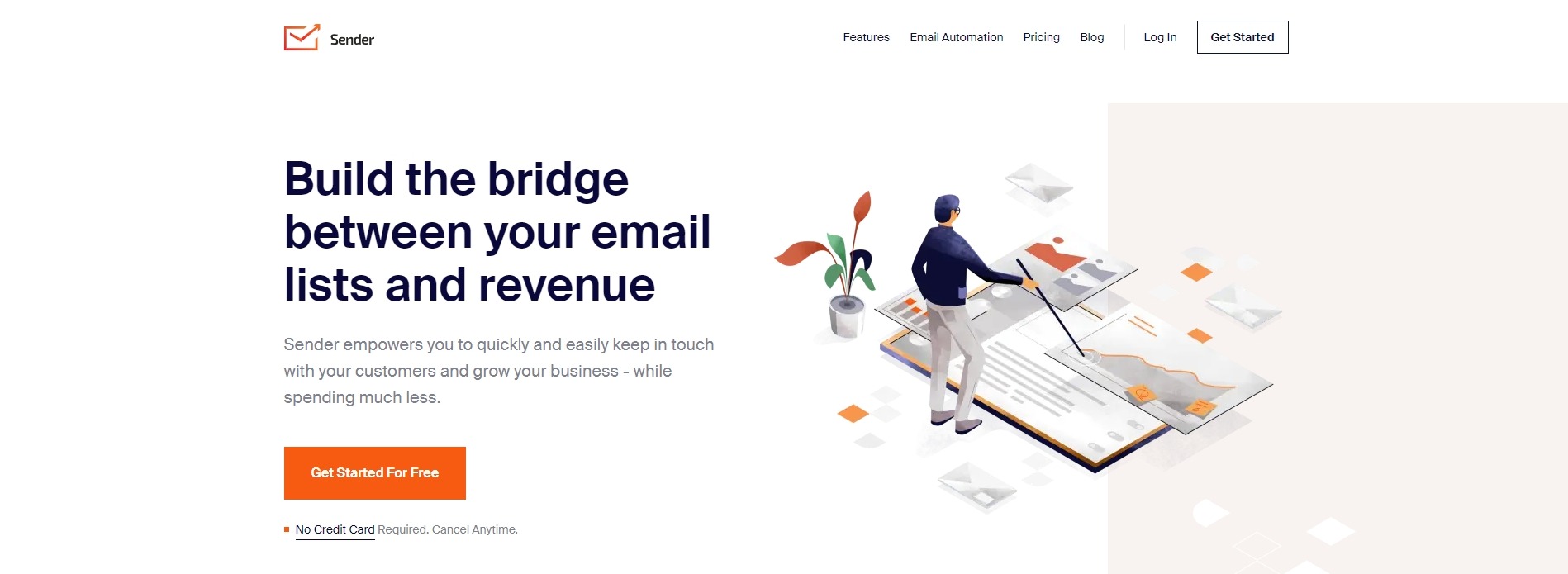
Sender is another newsletter software with a wonderful free plan. It offers push notifications to go along with subscribers segmentation, integrations, and other stunning email designs that you can customize.
Sender has plugins for all the most popular content management systems, while eCommerce companies can add products quickly simply by copying and pasting links. You can automate the social media marketing effort using the app and receive some tips to optimize the subject lines.
The analytic tool of Sender includes click maps as well as Google Analytics so you can track all metrics effectively. Another cool thing is that Sender’s email builder automatically converts videos into animated GIFs inside your emails, reducing the size and saving you time.
For the free plan, Sender lets users have up to 2,500 subscribers and 15,000 email sends per month. The next upgrade is $11 per month for 5,000 subscribers and up to 60,000 emails per month.
Sender doesn’t have all the fany automation tools for email marketing and not so many well-designed themes, but the pricing plans remain fairly low as the business upgrades. You can consider Sender as a budget option if you are a small eCommerce company.
7. Zoho Campaign
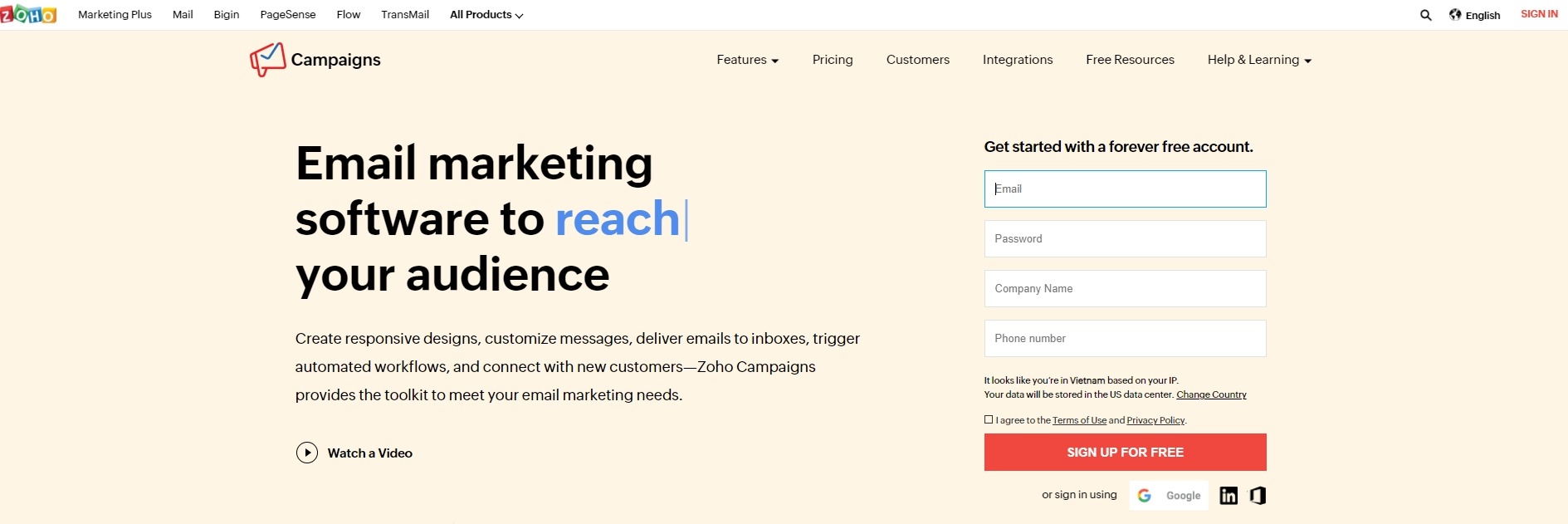
Zoho is kind of a well-known name in the marketing and sales world. Their impressive suite of services are what many marketers and small business owners want to have under one roof, not just for email marketing but also for running a company.
Zoho Campaigns is where their email marketing magic happens. They have a great selection of well-built templates and an editor that is easy to use. Their newsletter software is well worth checking out if your company’s on a budget.
The selling point of Zoho Campaigns is a well-designed interface and easy navigation. The editor is fast and has all the necessary elements, including video, polls, and columns. A cool feature is that users can insert images from Unsplash directly into the email. Segmentation is also available but with few options. Their range of emails and form templates are impressive though.
However, it’s a bit disappointing to see no kind of automations included in the free plan. If you want the feature, you need to pay for at least $5/month. With the free plan, you can send 12,000 emails per month with a list of up to 2,000 contacts. Also, the form builder can be better with the use of drag and drop methods.
Overall, Zoho Campaigns’ free plan is for any email marker looking for an easy-to-use newsletter software with decent subscriber number and email allowances. If you need some more basic email marketing automation and are not ready to pay, you’d be better off using AVADA Email Marketing.
8. Sendicate
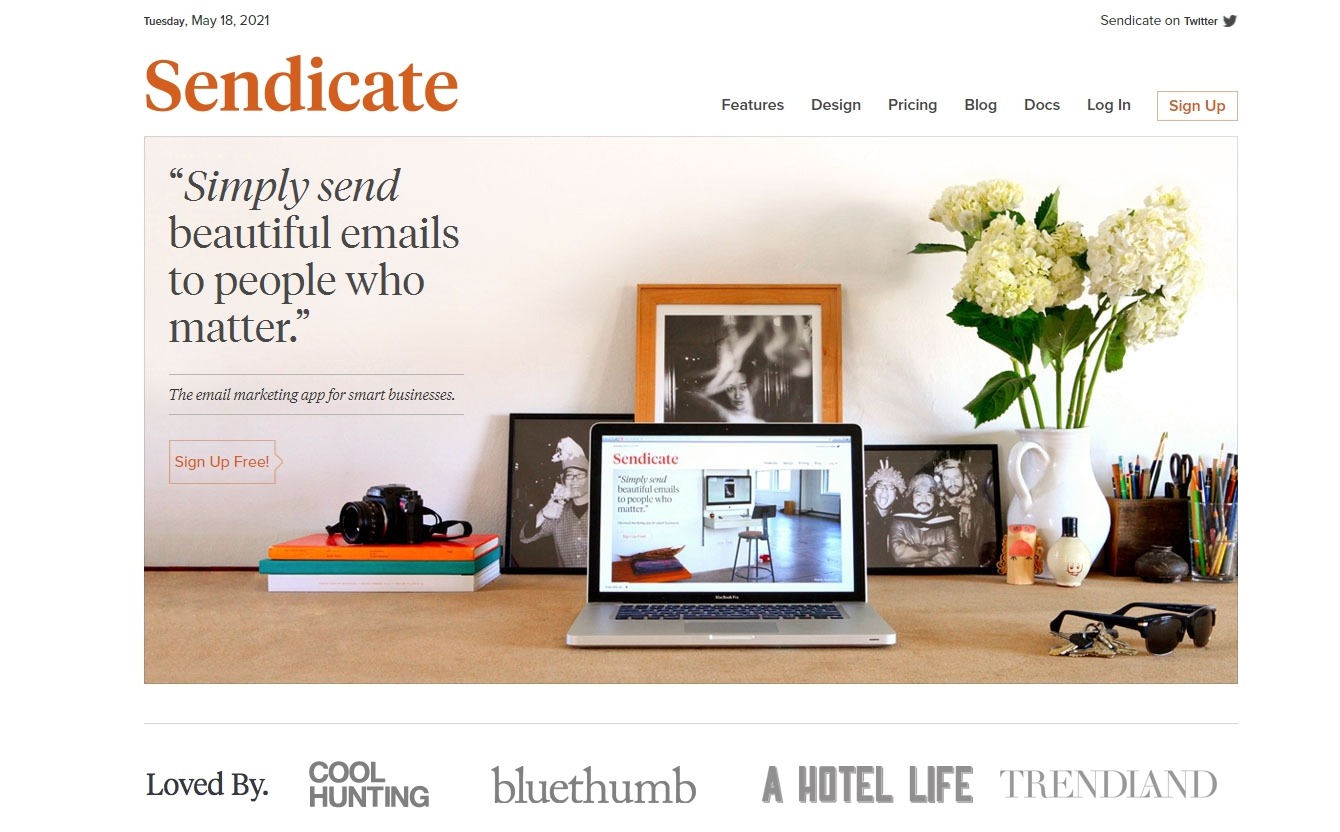
Sendicate is the very idea of an easy-to-use email newsletter software. With its stripped down and simple interface, users can add a column, image, headline, or video block. Blocks for columns are the core email elements: they let you add a text box with title and body having basic formatting, also you can insert a link to get recipients to open your product page or blog post.
You can send an email campaign with one section, or have additional sections to build your emails longer. Then, Sendicate’s handful of simple-yet-elegant themes let you preview the email to complement your content. To have even more customized emails, the software allows you to input custom HTML.
If you can’t finish building your message at the moment, Sendicate’s dashboard shows your draft messages with a snapshot preview on the dashboard so you can quickly pick up where you left off.
For the free plan of Sendicate, you can have up to 500 subscribers and send 1000 emails per month. The number is a bit low, but if you are a small business or a blogger, this is enough. To send unlimited emails, you only need to start paying $9 per month.
Overall, Sendicate is a simple newsletter software that is perfect for starting out and getting to know email marketing.
9. Omnisend
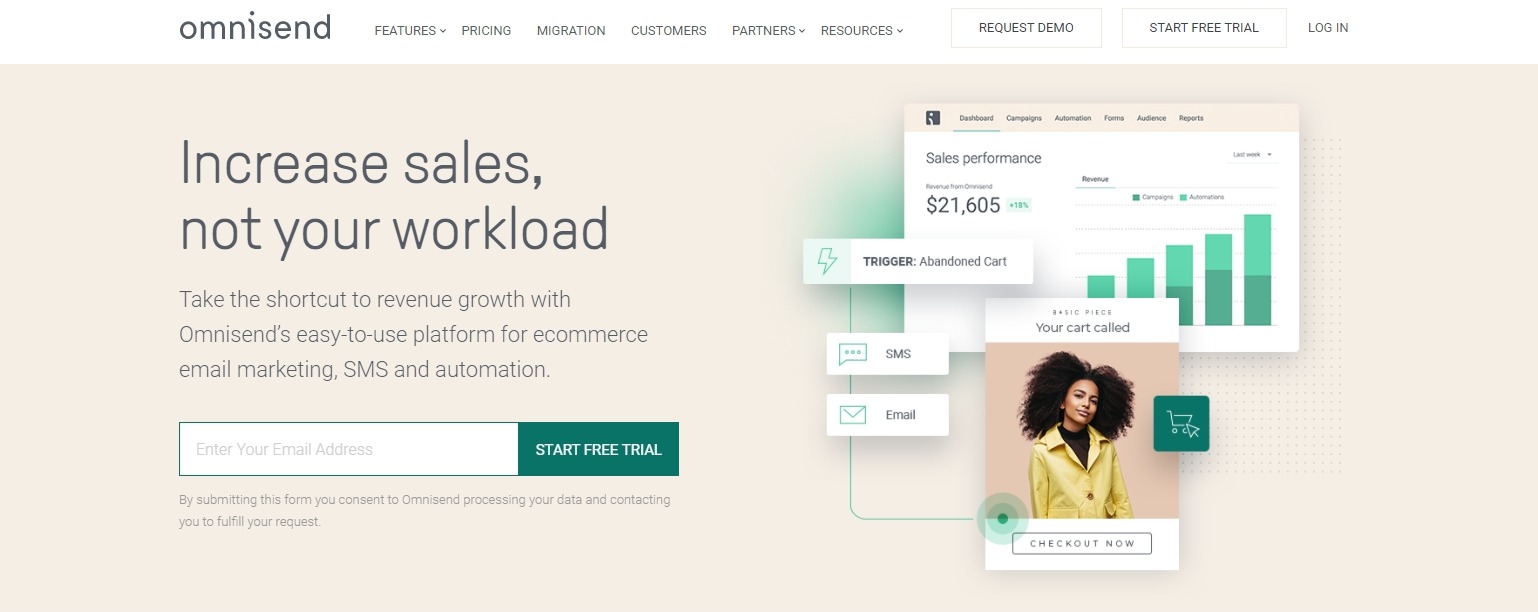
As a newsletter software that’s strongly built for eCommerce, Omnisend has many exceptional features, including the ability to automatically add the store’s products to the newsletters, automation workflows, and cool email add-ons like gift boxes and scratch cards. The bad news – none of these features are available on the free plan.
Regardless of that, Omnisend is still one of the must-try email service providers for online store owners. The free plan is still highly competitive with 15,000 emails per month and up to 2,000 emails per day. If you are looking to send newsletters in high volume for free, it is hard to beat those numbers.
Upgrading the plans will depend on whether you need to send more emails per month or have more advanced features. The next pricing option is $16 per month for 15,000 emails and 500 subscribers (but no eCommerce company would have only 500 subscribers though). The email count and pricing increases with more subscribers.
For the free plan, you also get 24/7 support, web tracking, deep reporting, and 3 forms/ landing pages. There are also automation reports and A/B testing with some free and responsive email templates, so this is not a bad deal at all.
Conclusion
Whenever you hear the word ‘free’ for software, you’re probably wondering ‘what’s the catch?’ Most of the newsletter software in this list acts as a freemium model, which means you get access to some features but also certain restrictions such as the number of subscribers, the emails you can send per month, or available features.
To select the best free newsletter software, you would need to see what their free plan offers and also, more importantly, what their paid plans offer so you can scale your online business. For that matter, I have to pick AVADA Email Marketing as the winner - offering a good amount of free features while still being highly scalable for eCommerce businesses.
But, to figure out the best newsletter software for your business, you would have to try them. After all, they are free!
New Posts






